As we continue our coverage of Black History Month with Part II, we find possibilities for class discussion and more. Encourage a comparison of the African-Americans you and your class have met through the podcasts. As your students meet a few more, talk about how each made history! Or . . . use the podcasts as a starting point for the opportunity to dive into additional research on figures of prominence.
Revolutionary Figures
Studying the Revolutionary War during February? Introduce folk hero Crispus Attucks (4-#55, Complete-#61). Killed in the Boston Massacre, Attucks is considered to be the first American casualty of the American Revolution.
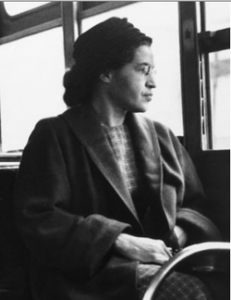 Juxtapose his story against that of everyday hero Rosa Parks (4-#65, Complete-#124), the civil rights activist in Montgomery, Alabama, who refused to surrender her bus seat to a white passenger in December of 1955. This led to a bus boycott by blacks that lasted for 381 days! A revolutionary figure in her own right, Parks is known as “the mother of the freedom movement.”
Juxtapose his story against that of everyday hero Rosa Parks (4-#65, Complete-#124), the civil rights activist in Montgomery, Alabama, who refused to surrender her bus seat to a white passenger in December of 1955. This led to a bus boycott by blacks that lasted for 381 days! A revolutionary figure in her own right, Parks is known as “the mother of the freedom movement.”
Although these two famous “firsts” made their mark in different ways, they both easily provide fodder for a discussion of “revolutionary” figures! Challenge your students to identify some more “revolutionaries” — past and present!
Standing Up and Leading the Way
No discussion of Black History would be complete without mentioning two very significant nineteenth and twentieth century African-American civil rights leaders. Like you Walking Classroom adopters and your students, these folks spent plenty of time on the move!
A Baptist minister and activist known for his “I Have a 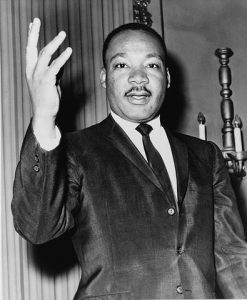 Dream” speech, Dr. Martin Luther King Jr. (4-#64, Complete-#123) led the Civil Rights movement in the 1950s and 1960s. King is also famous for his peaceful protests. These include the 1963 March on Washington attended by over 250,000 people, and the 1965 five-day, 54-mile march from Selma to Montgomery, Alabama.
Dream” speech, Dr. Martin Luther King Jr. (4-#64, Complete-#123) led the Civil Rights movement in the 1950s and 1960s. King is also famous for his peaceful protests. These include the 1963 March on Washington attended by over 250,000 people, and the 1965 five-day, 54-mile march from Selma to Montgomery, Alabama.
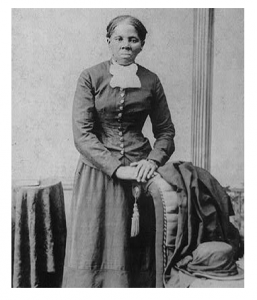 Another leader in her own time was Harriet Tubman (5-#50, Complete-#79). She herself made a 90-mile journey to freedom in Philadelphia. Later, Tubman led hundreds from a life of slavery in the South to freedom in the North. She became known as “Moses,” one of the most famous “conductors” along the Underground Railroad.
Another leader in her own time was Harriet Tubman (5-#50, Complete-#79). She herself made a 90-mile journey to freedom in Philadelphia. Later, Tubman led hundreds from a life of slavery in the South to freedom in the North. She became known as “Moses,” one of the most famous “conductors” along the Underground Railroad.
Explore the path Tubman took in leading folks to freedom. While you and your students can’t trace Tubman’s route in real life, you can easily make the trek . . . interactively!
Putting it All Together
Don’t have time for all of the podcasts cited above? No worries. You and your students can still engage in some interesting activities. Even just listening to a podcast or two help set the topic in your students’ minds. Afterward, allow for some independent work.
Have them help create a calendar of Black History for the classroom. Model the page for one month, and have them work in pairs to create pages for the remaining eleven months. Establish some basic goals — perhaps the inclusion of five significant events and five pictures for their month — and see what they can do!
Looking for another idea? Compile a class ABC Book. Generate a list of African-American historical figures, artists, actors, athletes, scientists, and musicians. Make sure names beginning with A through Z are represented! Have students independently research the individual of their choice to create a page of their own.
Develop a template for the pages, so that the completed book will have a uniform look. It will also help ensure the inclusion of each figure’s name, birth and death (if applicable) dates, and specific biographical information. The students can share their person’s story written as bullet points, in a paragraph, or in verse! You decide . . . or give your students the freedom to choose on their own!
Loving these ideas? Learn about other timely topics in future posts.


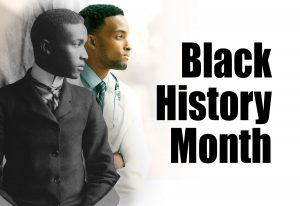
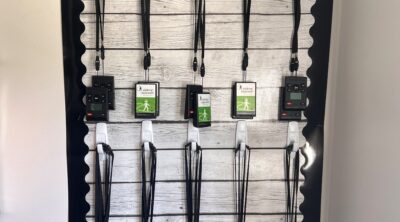

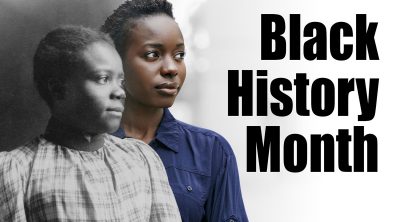
Leave a Reply